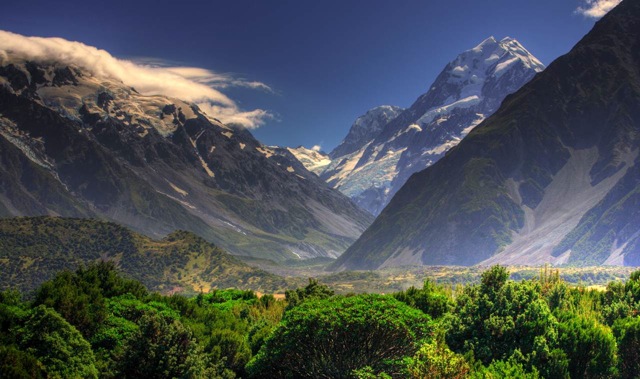Research |
How climate controls the evolution of mountain ranges Life and death of mountains (orogens) is what Geology is all about. Over the last two decades the mutual feedback between climate and mountain building has added an interdisciplinary component to mountain building and became a major theme in Earth System Science. The Southern Alps of New Zealand are one of the best targets for climate/tectonics research, because they are a young, pristine, active orogen undergoing rapid uplift, have been subjected to the Quaternary glacial-interglacial cycles, and have developed a pronounced rain shadow at some stage in their evolution. Following inception of the rain shadow, the latter has controlled the growth and architecture of the evolving Southern Alps. This has been expressed through the orogen developing a marked asymmetry with a narrow, steep western (windward) side and a broad, low-relief topography on its eastern (leeward) side. However, it is wholly unknown when the rain shadow formed. We answer this important question by constraining the cooling history of rocks on the west side, fault gouge, low-temperature thermochronologic and cosmogenic dating, as well as stable isotope and genetic studies of fish constraining orogenic growth on the east side, and by applying fully coupled geodynamic and ocean/atmospheric numerical modeling. The outcomes will shed new light on the long-standing debate on how rain shadows influence orogenic growth and how to date their inception. The series of four major earthquakes near Christchurch in 2010/11 is probably a manifestation of climate-driven eastward propagation of the Southern Alps and we will establish rates for eastward growth, thereby showing new and innovative links between climate, mountain building and natural hazards. Our study in the Southern Alps will help to better understand the evolution of older and more complex rain shadows of the Andes, western North America, the Himalaya and also the Scandes along the Swedish/Norwegian border, which strongly influences Swedish climate.
|


